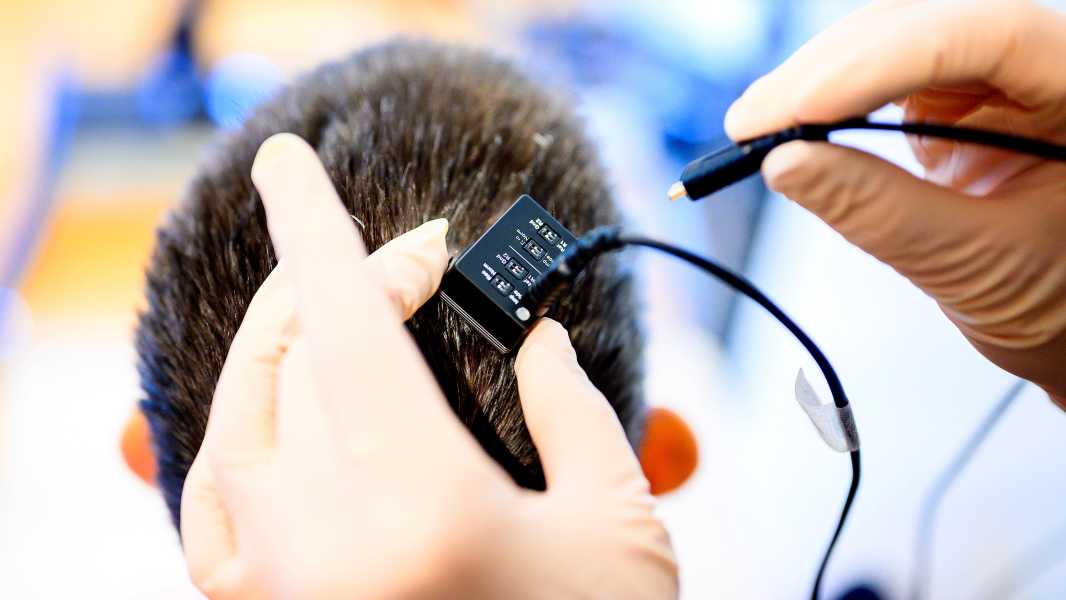
A brain-computer interface could provide an artificial voice to those who can't speak. (Image credit: Noah Berger)
A new study shows that a brain implant using artificial intelligence (AI) can decipher a person’s thoughts almost instantly and transmit them through a speaker. It is the first time that researchers have achieved near-synchronous transmission from the brain to the voice.
The experimental mind-reading technology has been developed to provide a synthetic voice to people with severe paralysis who are unable to speak. It works by placing electrodes on the surface of the brain as part of an implant known as a neuroprosthesis, which allows scientists to recognise and interpret speech signals.
The brain-computer interface (BCI) uses AI to decode neural signals and can transmit predicted speech from the brain in near real time, according to a report published by the University of California (UC) Berkeley. The team previously unveiled an earlier version of the technology in 2023, but the new version is faster and less mechanical.
Brain-voice flow neuroprosthesis for restoring natural communication – YouTube

See more
“Our streaming approach gives neural prosthetics the same fast speech decoding capability as devices like Alexa and Siri,” study co-author Gopal Anumanchipalli, an assistant professor of electrical engineering and computer science at the University of California, Berkeley, said in a press release. “Using a similar algorithm, we found that we could decode neural data and provide near-synchronous voice streaming for the first time.”
Anumanchipalli and his colleagues presented their findings in a study published Monday (March 31) in the journal Nature Neuroscience.
The first tester of the technology, named Anne, suffered a stroke in 2005 that left her severely paralyzed and unable to speak. She has since allowed researchers to implant 253 electrodes in her brain to monitor the area responsible for speech, called the motor cortex, with the goal of developing synthetic speech technologies.
“Basically, we’re intercepting signals as a thought turns into articulation, and during that motor control,” study co-author Chol Jun Cho, a graduate student in electrical engineering and computer science at the University of California, Berkeley, said in a statement. “So we’re decoding information after the thought has occurred, after we’ve decided what to say, after we’ve decided what words to use, and how to control the muscles of our vocal tract.”
The AI decodes the data received by the implant to help translate neural activity into synthetic speech. The team trained their AI algorithm by having Anne silently try to pronounce sentences that were displayed on a screen in front of her, and then matching the neural activity to the words she wanted to say.
The system sampled brain signals every 80 milliseconds (0.08 seconds) and could recognize words and convert them into speech with a latency of up to three seconds, according to the study. That's a little slower than a normal conversation, but faster than the previous version, which had a latency of about eight seconds and could only process entire sentences.
The new system benefits from processing shorter intervals of neural activity than the old one, allowing it to continuously process individual words without waiting for a complete sentence. The researchers say the new study is a step toward creating more natural-sounding synthetic speech using BCIs.
“This conceptual framework is a real breakthrough,” Cho said. “We are optimistic that we can now move forward at every level. For example, from an engineering perspective, we will continue to develop the algorithm to see how we can
Sourse: www.livescience.com





